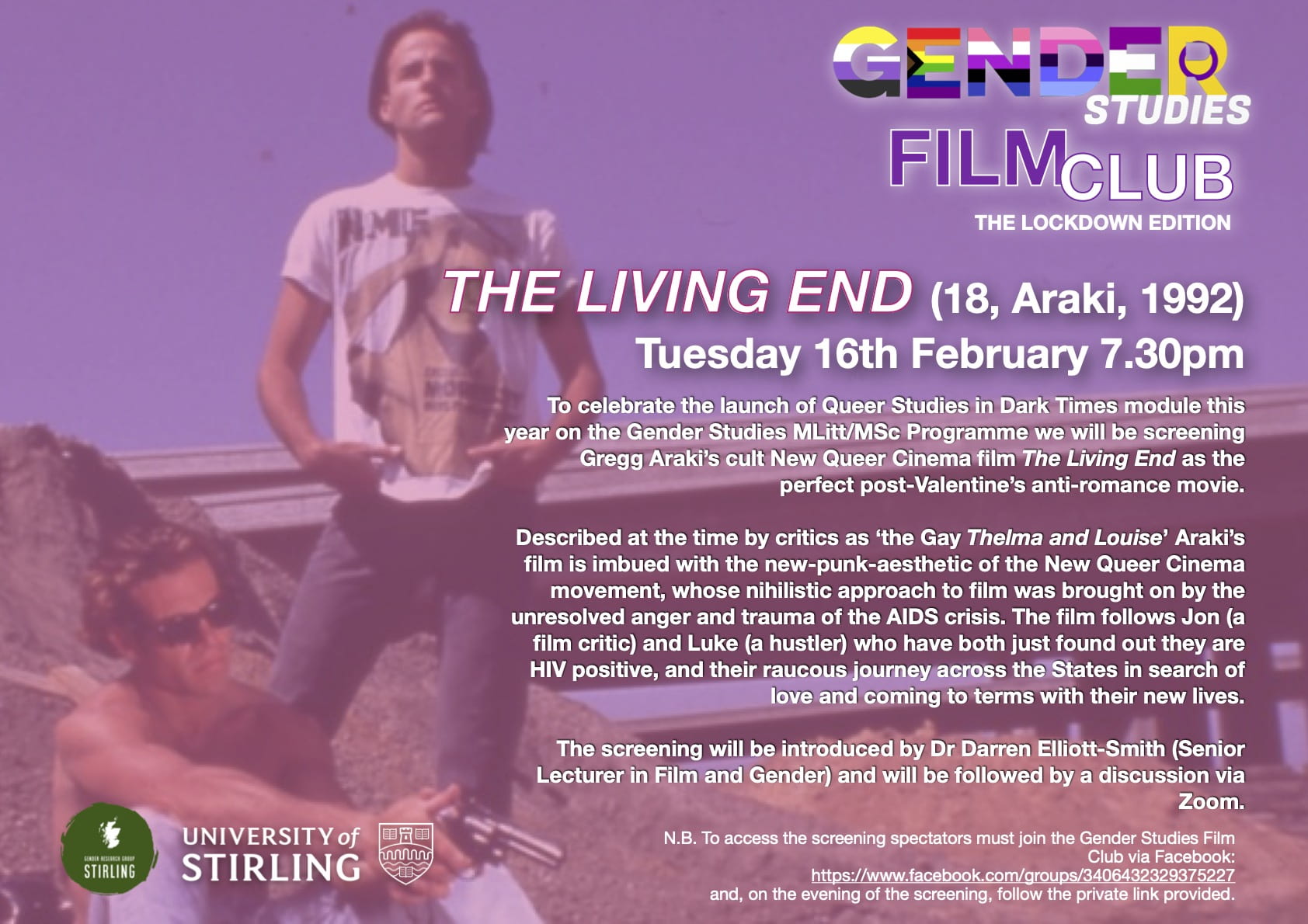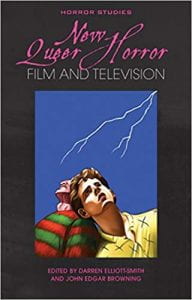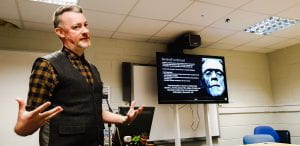Forthcoming Events:
Gender Studies Film Club Launch for Spring 2021 Semester!
Living End Gender Studies Film Club E-Flyer
Tuesday 16th February, 7.30pm
The Living End (18, Gregg Araki 1992) with intro and post-screening discussion.
To celebrate the launch of Queer Studies in Dark Times module this year on the Gender Studies MLitt/MSc Programme we will be screening Gregg Araki’s cult New Queer Cinema film The Living End as the perfect post-Valentine’s anti-romance movie.
Described at the time by critics as ‘the Gay Thelma and Louise’ Araki’s film is imbued with the new-punk-aesthetic of the New Queer Cinema movement, whose nihilistic approach to film was brought on by the unresolved anger and trauma of the AIDS crisis. The film follows Jon (a film critic) and Luke (a hustler) who have both just found out they are HIV positive, and their raucous journey across the States in search of love and coming to terms with their new lives.
The screening will be introduced by Dr Darren Elliott-Smith (Senior Lecturer in Film and Gender) and will be followed by a discussion via Zoom.
Sign up to the Facebook Gender Studies Film Club Group to attend:
Previous Events:
Book Launch of New Queer Horror film and television !
2: Queer Cult Performance: Recreating Rocky Horror in the Twenty-First Century – John Lynskey
3: Castrating the Queer Vampire in Let the Right One In (2009) and Let Me In (2010) – Darren Elliott-Smith
4: ‘Becoming Hannibal’: Identification and Transformation in Queer Horror Television – Ben Tyrer
6: ‘A Dream Within a Dream’: Children’s ‘Horror’ Television and Lesbianism in the World of Marceline the Vampire Queen – Simon Bacon
7: Abjection, Queer Bodies and Grotesque Doppelgängers in Jack and Diane and The Nature of Nicholas – Fernando Gabriel Pagnoni Berns and Mariana Zárate
8: At the Edges of (queer) Time and Space: Atemporality, Adolescence, and Abjection in Final Destination – Christopher Clark
10: Like and Lycanthropy: The New Pack Werewolf According to Tyler, Tyler and Taylor – Tim Stafford
11: ‘Unspeakable Acts’: Coming Out as Werewolf – Lisa Metherell.
12: ‘Sisters United’: Feminist Nostalgia, Queer Spectatorship, and the Radical Witch Politics of Rob Zombie’s The Lords of Salem – Ben Raphael Sher
Queer Fears and Gender Horrors: Community Event @ Category is… Books, 28th Nov 2019 via University of Stirling.
With a Queer Horror Rainbow Cake – sponsored by Marks and Spencers and as part of the Gender Research Group/Queer Fears Network, the event took place on 28th Nov @ queer bookstore Category Is Books in Glasgow, with a good crowd from the local community, including local customers, academics, queer horror film-makers and programmers/curators from arts/visual media. The event showcased the developing interest in LGBTQ+ Horror film and TV within commercial and aca-fan circles. Featuring two talks, one entitled ‘Unbury Your Gays’: On Queer Zombies and Mental Illness by Dr Darren Elliott-Smith (focusing on recent ‘out’ queer horror film and TV that features the queer zombie as an allegory for the mental illness as experienced in the LGBTQ+ community; the other presentation was made by PhD candidate (University of Strathclyde) and filmmaker, Sam Tabet looking at the emergence of lesbian slasher films that confront 21st century relationships within the homonormative queer community. We closed with a short film screening of The Quiet Room (Sam Wineman, 2018) and Q & A/discussion. Category Is Books has indicated that they would be keen to develop this as a regular ‘community’ event, celebrating queer horror throughout the year.
Public Lecture: Glasgow Film Festival, Industry Talks @ Royal Conservatoire,
Glasgow. 2nd March 2020
‘Unbury Your Gays’: Queer Zombies in Film and TV – Darren Elliott-Smith (Senior Lecturer in Film and Gender, University of Stirling)
This paper extends on my previous publications on Queer Zombies (Queer Horror Film and Television: Sexualityand Masculinity at the Margins (IB Tauris, 2016); Screening the Undead (IB Tauris, 2014); Zombies and Sexuality(MacFarland, 2014) where I argue that recent incarnations of the queer undead (alongside other monsters) haverepresented sub-cultural anxieties within the gay male community that have risen as a result of cultural acceptanceand normative assimilation. Jeffrey Sconce (2013) states that, in a ‘post-Uncanny’ age, the zombie is perhaps themost obvious among Western culture’s dead metaphors and undead allegories. I argue that the queer zombie is avisibly ‘out’, yet sympathetic, monster who has difference performed or writ out upon his skin and flesh which works,paradoxically, both to marginalise and to assimilate them into the horde. This paper will consider Bruce LaBruces’sforay into queer zombie art-pornography (Otto; or Up With Dead People (2008) and LA Zombie (2010)) whichreferences a fashionable trend in ‘zombie drag’ within popular culture. LaBruce’s films feature central protagonistzombies who, by their own admission, suffer from ‘an identity crisis’.
More seriously, the more recent depictions of the queer undead focus on the mental health implications of isolation and alienation both from within and without certain queer sub-cultures and communities. The presentation will consider the recent Irish zombie-drama The Cured (Freyne, 2018) and the cult BBC Three serial drama In the Flesh(2013-2015) both of which configure a post-zombie world in which the undead have been rehabilitated and relocated back into their domestic community alongside their ‘living’ friends and families. In particular the BBC drama follows Kieren Walker (Luke Newberry) as a young bisexual man whom, having committed suicide, rises from the dead only to be rehabilitated as a ‘partially deceased syndrome’ sufferer by the government and confined/closeted back home with his family. Like LaBruce’s works, In the Flesh also reimagines zombie-ism (queerness) as a disorder that can be treated and ‘fixed’ with medication. I want to suggest that these performative queer zombie texts work to depict queer masculinity as particularly fragile and susceptible to mental anguish. Keiren, the eponymous Otto (Jey Crisfar) and LA Zombie’s unnamed alien revenant and Senan in The Cured (all of whom have (un)successfully attempted suicide) all suffer a very real emotional turmoil that resounds strongly within the gay community. The performative elements of these undead queer figures present themselves in the corporeal reality of their experience from panic attacks, ‘passing’, group therapy and the marginalisation of the zombie/queer community. These humorous, yet elegiac texts suggest that death does not provide an easy way out from cultural persecution and mental distress, as Otto himself asks: ‘how do you kill yourself when you’re already dead?’.


